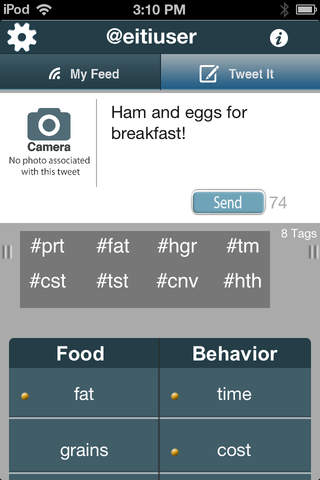 A study published earlier this summer in the Journal of Medical Internet Research found that Twitter can help people capture dietary intake and behavior.
A study published earlier this summer in the Journal of Medical Internet Research found that Twitter can help people capture dietary intake and behavior.
The data from the study was integrated into Eat It Tweet It, an app in the Apple App store created to integrate with Twitter and offer users a portal to tweet exclusively about their diet. The app, created at New Mexico State University, includes preset hashtags categorized as behavior or food and a camera feature to take a picture of the meal.
The study acknowledges many software applications exist for tracking food data, but lack the "empirical evidence supporting their efficacy as health promotion tools". Researcher Melanie Hingle's objective was to test the feasibility of Twitter to capture young adults' dietary behavior and visualize this data using Twitter's analytic tool. Upon finishing the study, the participants completed a survey to determine if they found this method viable for regularly recording food data.
Hingle's study ran for three consecutive days with 50 participants from the University of Arizona. All participants used the native Twitter app on study-specific accounts to report via tweet and hashtag every time they ate or drank. Hingle gave participants 24 hashtag options that either describe the food or reason for eating the food. After the study, a total of 773 tweets containing 2,862 hashtags were reported. Of the hashtags, about 60 percent were food-related and the rest were reasons for eating.
A majority of the participants used their mobile phones to access Twitter, 56 percent, while 8 percent used a desktop or laptop and 36 percent used a combination of the two.
After the study, users made various comments about the feasibility of the program. Overall, 38 of the 50 participants found Twitter easy to use while five thought the character limit presented a challenge to accurately reporting data. Participants also suggested creating their own hashtags to better describe food choice and reasons for eating. Eighteen participants wanted feedback on their diet habits and suggestions for how to improve their diet.
The study's other objective was to create data visualizations of the tweets, which Hingle's team was able to do with the information from hashtags and time of day of tweets. The study authors believe that future iterations of data visualizations could include heat maps that integrate phenotype of sociodemographic data.















